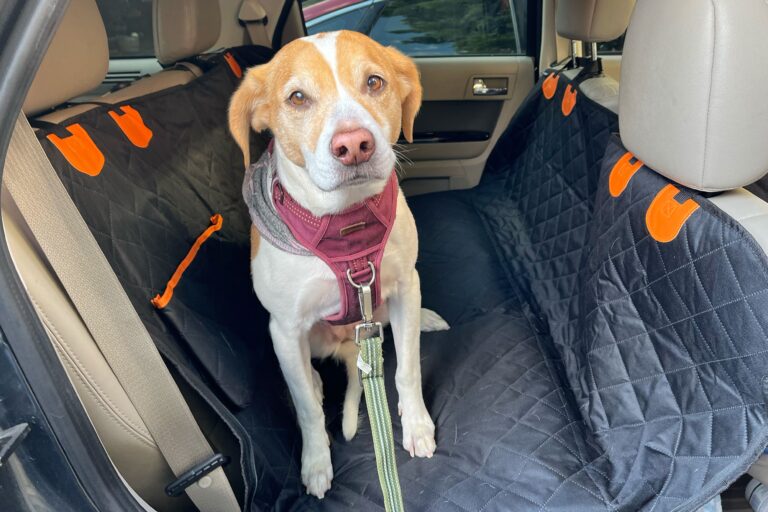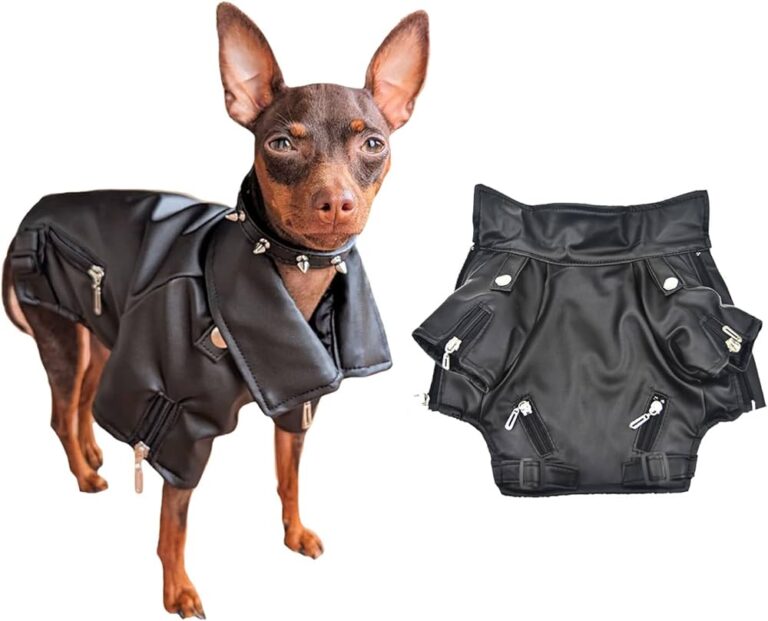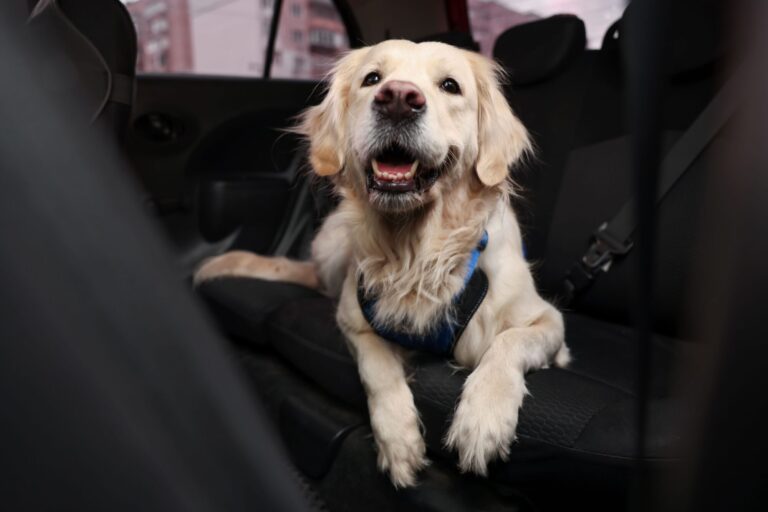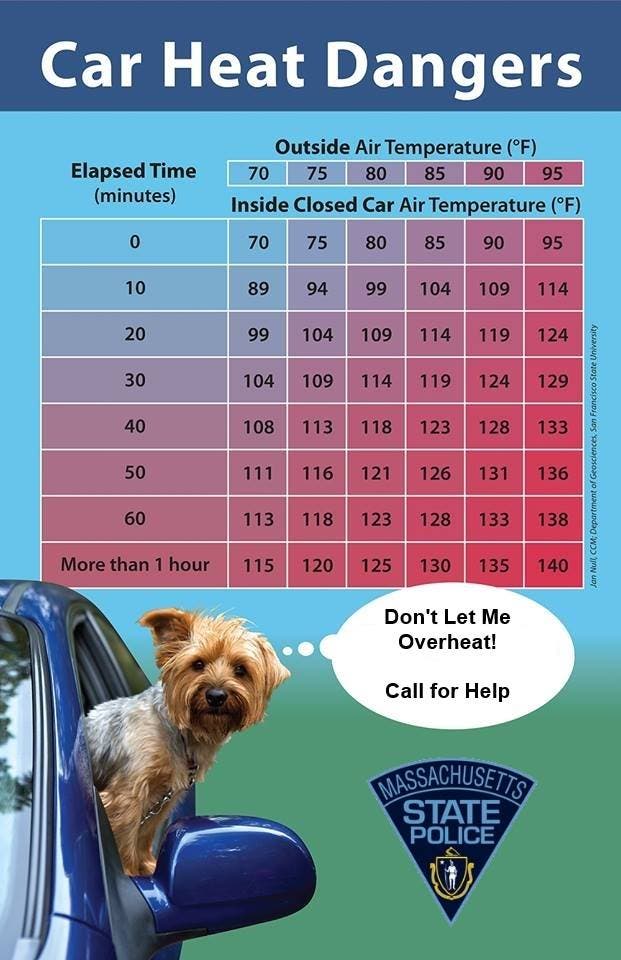How Long Can a Dog Be in a Car? Essential Safety Tips
Dogs should not be left in a car for more than 5-10 minutes, especially in extreme temperatures. Prolonged exposure can lead to serious health risks.
Leaving a dog in a car can be dangerous, even for short periods. Temperatures inside a vehicle can rise quickly, leading to heatstroke or hypothermia. Dogs are more sensitive to temperature changes than humans, making it crucial to minimize their time in a parked car.
Always ensure your dog has proper ventilation and water. If you need to leave your dog in the car, keep it brief and monitor the temperature closely. Planning ahead and considering your dog’s safety can prevent potential health hazards. Responsible pet ownership includes being mindful of your dog’s environment and well-being.

Credit: patch.com
Introduction To Canine Car Travel
Taking your dog on car trips can be fun. But it’s essential to know how long they can stay in a car. This ensures your dog’s safety and comfort. Let’s dive into what you need to know.
Importance Of Knowing Travel Limits
Knowing the travel limits is crucial for your dog’s health. Dogs can overheat quickly in a car. Even short trips in hot weather can be dangerous.
Being aware of how long they can stay in a car prevents stress. Stress can affect your dog’s mood and health. It’s essential to plan breaks during long trips.
Factors Affecting Dogs During Car Trips
Several factors influence how long a dog can stay in a car. Below is a table that highlights these factors:
| Factor | Impact |
|---|---|
| Temperature | High temperatures can cause heatstroke. |
| Ventilation | Good airflow is necessary to keep the dog cool. |
| Hydration | Dogs need water to stay hydrated. |
| Duration | Long trips require breaks for exercise and bathroom needs. |
Below is an unordered list of additional factors:
- Age and health: Older dogs and puppies may need more breaks.
- Behavior: Anxious dogs might struggle with long trips.
- Car setup: Ensure your dog has a comfortable space.
Understanding these factors helps make the journey pleasant. A happy dog means a happy trip for everyone.
Assessing Your Dog’s Car Tolerance
Understanding your dog’s tolerance for car rides is crucial. Dogs, like humans, have different comfort levels. Assessing this can help ensure their safety and well-being during travels.
Signs Of Stress And Anxiety
Recognizing signs of stress and anxiety in your dog is vital. Common signs include:
- Panting excessively
- Drooling more than usual
- Whining or barking
- Restlessness or pacing
- Trembling or shaking
If your dog exhibits these signs, they may not be comfortable in the car. It’s important to address these issues promptly.
Building Up Travel Endurance
Building your dog’s endurance for car travel takes time and patience. Start with short trips to help them acclimate. Gradually increase the duration as they become more comfortable.
- Begin with a 5-minute drive around the block.
- Increase the drive to 10-15 minutes over a few days.
- Take them on a 30-minute drive once they seem comfortable.
- Monitor their behavior and adjust the duration accordingly.
Using positive reinforcement can also help. Reward your dog with treats or praise after each successful trip. This creates a positive association with car rides.
| Duration | Actions |
|---|---|
| 5 minutes | Short drive around the block |
| 10-15 minutes | Longer drive, monitoring behavior |
| 30 minutes | Extended trip, ensuring comfort |
Regular breaks during long trips are essential. This allows your dog to stretch, hydrate, and relieve themselves. Always ensure your dog is secure in the car, whether with a crate, seatbelt, or harness.
Recommended Duration For Dog Car Journeys
Taking your dog for a car ride can be fun. But it’s important to know how long your dog can stay in the car safely. This guide will help you understand the recommended duration for dog car journeys.
Short Trips Vs. Long Hauls
Short trips are usually safe for dogs. These are trips that last 15 to 30 minutes. Short trips include visits to the vet or a quick drive to the park. Dogs can handle these without much stress.
Long hauls are different. These are trips that last more than 30 minutes. Long hauls require more planning. Dogs need breaks to stretch and relieve themselves. Plan to stop every two hours during long trips. Make sure your dog has water and a comfortable place to rest.
Breed-specific Time Considerations
Different breeds have different needs. Small breeds like Chihuahuas and Pugs can get tired quickly. They may need more frequent breaks. Large breeds like Labradors and German Shepherds can handle longer trips. But they still need breaks every two hours.
Some breeds are sensitive to heat. Brachycephalic breeds like Bulldogs and Shih Tzus can overheat easily. They should not stay in the car for long periods. Always keep the car cool for these breeds.
| Breed Type | Recommended Break Frequency |
|---|---|
| Small Breeds | Every 1-1.5 hours |
| Large Breeds | Every 2 hours |
| Brachycephalic Breeds | Every 1 hour, keep the car cool |
Always watch for signs of stress in your dog. If your dog is panting heavily, whining, or seems restless, it’s time for a break.
Prepping For The Road: Essentials Checklist
Planning a road trip with your dog? Preparation is key to ensure a safe and pleasant journey for both you and your furry friend. This section covers the must-have items and tips to keep your dog comfortable, hydrated, and secure during the trip.
Safety Restraints And Harnesses
Safety restraints and harnesses are crucial for keeping your dog secure in the car. They help prevent injuries in case of sudden stops or accidents.
- Dog Seat Belts: Choose a dog seat belt that attaches to your car’s seat belt system. It should fit snugly to avoid discomfort.
- Crates and Carriers: A sturdy crate can offer added protection. Ensure it is well-ventilated and secured in the vehicle.
- Harnesses: Use a crash-tested harness for extra safety. These are designed to distribute force evenly in case of impact.
Always use a safety restraint to prevent your dog from distracting the driver. Safety should be your top priority.
Hydration And Feeding On The Go
Keeping your dog hydrated is essential. Always carry enough water for the entire trip.
- Portable Water Bowls: These collapsible bowls are easy to pack and use.
- Water Bottles: Bring a dedicated water bottle for your dog. Avoid sharing to maintain hygiene.
Feeding your dog on the go can be tricky. Pack lightweight, easy-to-serve meals.
- Dry Kibble: This is convenient and mess-free.
- Wet Food Packs: Opt for single-serving packs to avoid leftovers.
- Treats: Bring your dog’s favorite treats to keep them happy and rewarded.
Frequent breaks are essential. Stop every 2-3 hours for bathroom breaks, water, and short walks. This keeps your dog comfortable and reduces stress.
By following this essentials checklist, you can ensure a safe and enjoyable road trip for your dog. Happy travels!
Creating A Safe And Comfortable Car Environment
Keeping your dog safe and comfortable in the car is very important. Dogs can get stressed or sick during car rides. Let’s see how to make the car a happy place for your dog.
Temperature Control And Ventilation
Keep the car cool and ventilated. Dogs can overheat quickly. Never leave your dog in a hot car. Use the air conditioner or open the windows. Make sure there is fresh air. Check the temperature before starting the trip. The car should not be too cold or too hot.
Bedding And Space Setup
Provide comfortable bedding. A soft blanket or dog bed can help. Make sure the bedding is clean and dry. Give enough space for your dog to lie down and move. Do not overcrowd the car with luggage. Your dog needs room to relax. Secure your dog with a seatbelt or crate. This keeps them safe in case of sudden stops.
Pit Stops: Managing Breaks And Exercise
Traveling with your dog requires planning for their comfort and health. Regular pit stops are essential for your dog’s well-being. They need time to stretch, relieve themselves, and get some fresh air. This section will guide you on how to manage these breaks effectively.
Frequency Of Stops For Health And Comfort
Dogs need breaks every two hours during car trips. These stops help prevent discomfort and restlessness. Long periods in the car can lead to health issues for dogs. Frequent stops ensure they stay comfortable and happy.
| Duration of Trip | Number of Stops Needed |
|---|---|
| Up to 2 hours | 1 stop |
| 2-4 hours | 2 stops |
| 4-6 hours | 3 stops |
| 6-8 hours | 4 stops |
Leash Safety And Location Selection
Always use a leash during breaks. This keeps your dog safe and under control. Look for safe locations to stop, such as parks or rest areas. Avoid busy streets or areas with heavy traffic.
- Choose quiet areas for breaks.
- Ensure the leash is secure before opening the car door.
- Let your dog walk and stretch for at least 10 minutes.
Planning pit stops improves the travel experience for both you and your dog. Frequent stops and safe locations keep your dog happy and healthy.
Dealing With Car Sickness In Dogs
Traveling with dogs can be fun, but car sickness may spoil the journey. Knowing how to handle this issue ensures your dog stays comfortable. Let’s dive into the signs of motion sickness and how to prevent it.
Identifying Motion Sickness Symptoms
Recognizing motion sickness in dogs is crucial. Common symptoms include:
- Excessive drooling
- Yawning frequently
- Whining or crying
- Vomiting
- Restlessness
If your dog shows these signs, it might be experiencing motion sickness. Acting quickly helps in managing the situation better.
Preventative Measures And Remedies
Preventing car sickness in dogs involves several strategies. Here are some effective measures:
- Feed your dog lightly before the trip. A full stomach can worsen symptoms.
- Keep the car cool and well-ventilated. Fresh air can reduce nausea.
- Use a crate to provide stability and comfort.
- Take frequent breaks to let your dog stretch and breathe fresh air.
- Try anti-nausea medications prescribed by your vet.
Natural remedies can also help. Consider:
- Ginger – Known for its anti-nausea properties.
- Peppermint oil – Can calm the stomach.
- Lavender – Provides a soothing effect.
Consult your vet before trying new remedies. Ensuring your dog’s safety is paramount.

Credit: franklinpet.com
Emergency Preparedness And First Aid
Emergency preparedness can save your dog’s life. Be ready for any situation. First aid knowledge is crucial when your dog is in the car. This guide helps you stay prepared.
First Aid Kit For Dogs
A first aid kit for dogs is essential. Here’s what you need:
- Gauze pads for wounds
- Bandages to wrap injuries
- Antiseptic wipes for cleaning cuts
- Hydrogen peroxide to induce vomiting if instructed
- Digital thermometer to check your dog’s temperature
- Tweezers for removing ticks or splinters
- Scissors for cutting bandages
- Emergency blanket to keep your dog warm
- Disposable gloves for hygiene
- Saline solution for eye irrigation
Recognizing And Responding To Emergencies
Recognizing signs of distress is vital. Look for these symptoms:
| Symptom | Possible Cause | Action |
|---|---|---|
| Heavy panting | Heatstroke | Move to a cool area, o |
Legal Requirements And Best Practices
Understanding the legal requirements and best practices for leaving a dog in a car is crucial. Knowing state laws, insurance implications, and safety tips ensures your pet’s safety and your peace of mind.
State Laws On Dog Transportation
Different states have specific laws regarding dogs in cars. Some states prohibit leaving animals unattended in a vehicle under any circumstances. Others have temperature-related restrictions. Here is a quick overview:
| State | Law |
|---|---|
| California | Prohibits leaving animals in vehicles when conditions are dangerous. |
| New York | Allows intervention if an animal’s health is at risk. |
| Florida | Prohibits leaving animals in vehicles if it endangers their health. |
Always check your state laws before leaving your dog in a car. This ensures you comply with the law and keep your pet safe.
Insurance And Liability Considerations
Leaving a dog in a car can impact your insurance. Most policies do not cover damages if your pet causes harm while left alone in a vehicle.
- Check your policy: Understand what is covered and what is not.
- Liability: You might be held liable if your dog causes damage or injury.
- Safety: Ensure your dog is safe and secure in the car.
Reviewing your insurance policy is essential. This helps avoid unexpected costs and ensures your pet’s safety.

Credit: www.purina.co.uk
Conclusion: Ensuring A Pleasant Journey
Traveling with your dog can be a fun experience. But it’s important to ensure their comfort and safety. Long car rides can be stressful for dogs. This section will help you ensure a pleasant journey for your furry friend.
Key Takeaways For Dog Owners
- Never leave your dog alone in a parked car. Temperatures can rise or fall quickly.
- Plan regular breaks. Allow your dog to stretch, hydrate, and relieve themselves.
- Ensure proper ventilation. Keep windows slightly open for fresh air.
- Use a crash-tested crate or harness. This keeps your dog secure during the trip.
- Pack a travel kit. Include water, food, bowls, leash, waste bags, and a first-aid kit.
- Familiarize your dog with car rides. Start with short trips before long journeys.
Encouraging Responsible And Safe Travel
Ensure your dog’s safety by following these tips:
- Check the weather forecast. Avoid traveling during extreme temperatures.
- Never leave your dog alone in the car. Even for a few minutes.
- Keep your dog hydrated. Carry enough water for the entire trip.
- Provide a comfortable space. Use their favorite blanket or toy.
- Avoid feeding right before the trip. This helps prevent car sickness.
- Monitor their behavior. Look for signs of stress or discomfort.
By following these tips, you can ensure a safe and pleasant journey for your dog. Happy travels!
Frequently Asked Questions
How Long Can A Dog Safely Be In A Car?
A dog should not stay in a car for more than 15 minutes, especially in hot or cold weather.
Is It Okay To Leave A Dog In The Car For An Hour?
No, it’s not safe to leave a dog in the car for an hour. Temperatures can rise quickly and harm your pet.
How Long Is Too Long Of A Car Ride For A Dog?
A car ride longer than 4-6 hours can be too long for a dog. Regular breaks are essential. Ensure they have water and a chance to relieve themselves.
How Long Can You Leave A Dog In The Car By Itself?
Do not leave your dog in the car alone for any length of time. It can be dangerous and illegal.
Conclusion
Ensuring your dog is safe in the car is crucial. Always monitor the temperature and never leave them unattended. Short trips are generally fine, but prolonged stays can be dangerous. Keep your furry friend comfortable and avoid unnecessary risks. Prioritize their well-being to enjoy worry-free travels together.
- Can I Get in a Taxi Without a Car Seat? - January 26, 2025
- Can I Get Chlamydia From a Toilet Seat? - January 26, 2025
- Can I Get an Uber With a Car Seat? - January 26, 2025






